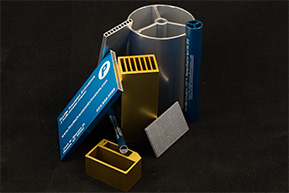Aluminum has played a vital role in aviation from its very beginning. Throughout every generation of aircraft and spacecraft, aluminum’s high strength to weight ratio and ease of fabrication has made it a first choice for designers and engineers. In fact, the first time that aluminum was used in aviation dates all the way back to 1903 with the Wright Brothers. According to the Aluminum Association, The Wright Brothers 1903 Flyer used an aluminum crankcase to reduce weight. Ever since then, applications of aluminum in the aviation industry have exploded–especially during these eras:
World War II
It was always understood that aluminum was extremely valuable and useful, but it wasn’t until the end of the 19th century that aluminum could be produced at a low cost. The New Deal’s Rural Electrification Program and investment in hydro-electric projects resulted in aluminum becoming an affordable metal at the beginning of World War II. Its popularity & demand skyrocketed according to Historical Boys’ Clothing. In addition to a massive increase of aluminum in consumer goods, the material became widely used in aircraft frames, ship infrastructure, radar chaff, and other aviation products. In fact, more than half of the 296,000 planes produced in the US during World War II were primarily made of aluminum.
The Space Age
Aluminum was naturally at the forefront of the Space Age. In fact, Sputnik’s pressurized sphere was made of aluminum alloy when it launched in 1957–according to NASA. The Apollo command modules and moon rovers also made extensive use of aluminum. For example, the Lunar Roving Vehicle featured aluminum floor panels, framing, and even aluminum hubs on the wheels. Aluminum was also the primary fuel for NASA’s space shuttles’ solid rocket motor, mainly because of its high energy density and its characteristic of being difficult to ignite accidentally. The trend continues today with the development of aluminum-air batteries, nanotechnology, and advanced alloys for space vehicles and aircraft. The aluminum industry continues to be an indispensable participant in the Space Age.
Knowing all of this, it’s no surprise that Profile Precision Extrusions’ fastest growing market segment is the aviation/aerospace industry. We extruded aluminum shapes for LED lights for 737 interiors, brackets and control arms for overhead bins, hinges for closets & gally’s, structural & trim components for lavatories, and heat pipes for satellite cooling systems. Contact us today to find out how we can assist you with your aerospace aluminum extrusion needs.


